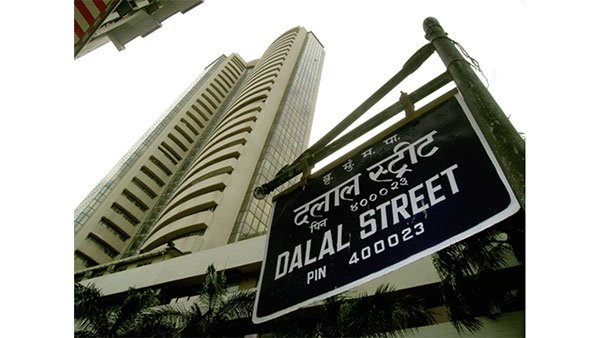Encouraging investments with a long-term horizon requires a strategic approach to mitigating speculative flows. It’s vital to create a financial landscape where long-term investments are more attractive and viable than short-term speculative activities. By curbing speculative flows, we can ensure a stable investment environment that favors long-term economic progress and stability.
Market Dynamics Amidst Regulatory Cautions
In the wake of cautionary statements by regulatory bodies regarding the liquidity concerns associated with small-cap and mid-cap mutual funds, we observed a significant retraction in the market values of these investments in March 2024. Contrary to these warnings, April saw a resurgence among these funds, leading many to question the validity of the initial alarms.
The rapid downturn in the market prices of small-cap stocks in March, which occurred without significant sell-offs by mutual funds or individual investors, suggests that speculation played a major role in their previous valuations. This speculation quickly dissipated at the hint of instability, only to see these stocks being gradually picked up again as the anticipated mass sell-off by mutual funds and Portfolio Management Services (PMS) never materialized. Throughout this volatility, the majority of retail investors remained passive, watching from the sidelines.
The Liquidity Challenge
In an effort to address these liquidity concerns, small and mid-cap mutual funds have begun to regularly publish the results of stress tests. These tests are designed to showcase potential liquidity risks under varying market conditions. While not particularly alarming during stable periods, these results can incite panic during downturns. Still, the industry struggles to find effective strategies for managing significant withdrawals in such scenarios.
Investment Trends and Valuation Concerns
The flow of investments through Systematic Investment Plans (SIPs) remains steady, feeding capital into mutual funds. However, the scarcity of attractively priced investment opportunities is prompting funds to continue investing in their existing portfolios, regardless of those companies’ growth prospects or current valuations. This practice has led to inflated valuations across the stock market.
Foreign investors are taking note of these elevated price tags, with many choosing to reduce their holdings in Indian markets. Similarly, the high cost of investment in India, despite its potential benefits, is making it a less attractive destination for Foreign Institutional Investors (FII) and Foreign Direct Investments (FDI) compared to other markets.
The Broader Implications for Investors
The overall market is experiencing high valuations, affecting investment decisions across all market capitalizations. While shifting focus from small and mid-caps to large-caps might ease liquidity issues, it does not address the fundamental goal of investing—returns. Given the current market conditions, the risk-return ratio is far from appealing across the board. The dominant role of speculative trading has escalated prices to the point where they deter both seasoned and prospective investors.
The Overlooked Perils in Investment Landscape
Regulatory bodies seem to be turning a blind eye to the dangers lurking within portfolio management schemes (PMS), particularly those with significant investments in small and mid-cap companies. These investment vehicles are buoyed by continuous capital inflows. Unlike the passive stance observed in mutual fund retail investors, those putting their money into PMS are typically more proactive and well-informed. This group’s potential rapid withdrawal can instigate a domino effect, spreading panic across various stocks and destabilizing the market.
The Rise of Speculative Investments
There has been a noticeable increase in speculative activities, driven by easy access to various financing options such as margin funding, personal loans, and loans secured by shares, real estate, or gold. This ease of obtaining funds is pushing speculation in both small and mid-cap, as well as large-cap stocks through the extensive use of futures and options. Stock exchanges and brokerage firms, motivated by the prospect of higher trading volumes, which largely consist of speculative transactions, are currently promoting these practices. Although regulatory authorities have been vocal about the dangers and have issued multiple warnings, their advice seems to be ignored. The time has come for more decisive action to be taken to curb speculative trading before it leads to dire consequences.
The Impact of Speculative and Long-term Investments
Recent episodes of abnormal returns and the quick recovery of markets from corrections are likely to promote increased risk-taking behavior among speculators. This group’s impact on stock prices can be beneficial during market upswings but disastrous during downturns, as evidenced in March. However, the continuous investment through Systematic Investment Plans (SIPs) and index funds is providing a steady stream of capital into the markets. These long-term investment flows tend to be resilient against fluctuations in the economy, market sectors, or individual stocks, thus stabilizing the market to some extent.
Given the rising inflows from long-term investors, the reliance on speculative capital is diminishing. Now is an opportune moment for bold regulatory measures aimed at limiting speculative investments in the stock market. Initiatives to curb speculation should not stop with the foreign exchange market, as the stock market is witnessing even greater levels of speculative activity.
Towards a Balanced Investment Ecosystem
In summary, the growing trends of speculation necessitate a more vigilant and proactive stance from regulatory authorities. While speculative trading can offer short-term gains for the market, its long-term impact could potentially harm genuine investment and economic stability. By implementing stricter controls and fostering an environment that encourages sustainable investment practices, we can ensure a healthier, more resilient financial market.
Taking action now will not only stabilize the market but also protect the interests of long-term investors, safeguarding the integrity of our financial systems for future generations.











